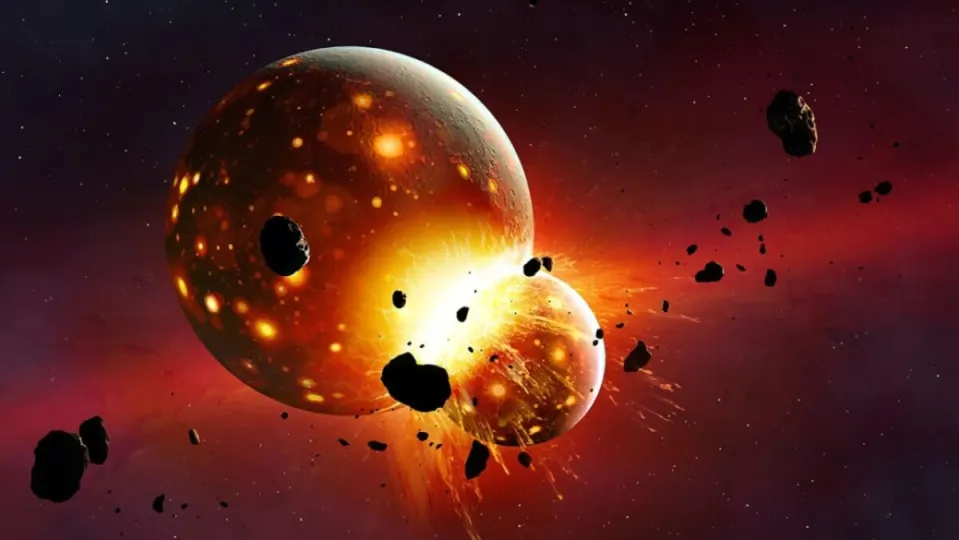Have you ever wondered how the Moon was formed? According to the most accepted theory, about 4.5 billion years ago, the early Earth (Gaia) collided with a Mars-sized protoplanet called Theia. Our natural satellite was born from the debris of this collision. But this theory has a problem: the composition of Earth and the Moon is very similar, which doesn’t make sense if the Moon is primarily made of Theia’s material.
Now, an international team of researchers may have shed some light on this mystery by discovering a massive anomaly inside the Earth that could be a remnant of the collision that formed the Moon.
This anomaly is located in the Earth’s lower mantle, a deep and solid layer that surrounds the core. It’s a region of low seismic velocity (or LLVP, in English), which means that seismic waves travel more slowly through it than through the rest of the mantle.
This study, featured as the cover story in the journal Nature on November 1, is the result of interdisciplinary collaboration among scientists from China, the United States, France, and Germany. The lead author is Professor Deng Hongping from the Shanghai Astronomical Observatory (SHAO) of the Chinese Academy of Sciences.
The researchers used an innovative computational fluid dynamics method called Meshless Finite Mass (MFM) to simulate the giant impact between Gaia and Theia. With this method, they were able to accurately model the turbulence and mixing of materials that occurred during the collision.
In this way, they discovered that the early Earth exhibited mantle stratification after the impact, with the upper mantle and lower mantle having different compositions and states.
The upper mantle was comprised of a magma ocean, created by a complete mixture of material from Gaia and Theia, while the lower mantle remained mostly solid and retained Gaia’s material composition. This would explain why Earth and the Moon have a similar isotopic composition, as both were formed from this magma ocean.
But then, what happened to Theia’s material? The researchers suggest that some of it might have become trapped in the LLVPs of Earth’s lower mantle, thus forming a massive anomaly that persists to this day. This anomaly could be a relic of the collision that formed the Moon and could provide valuable clues about the Earth’s internal structure, its long-term evolution, and the formation of the inner solar system.


